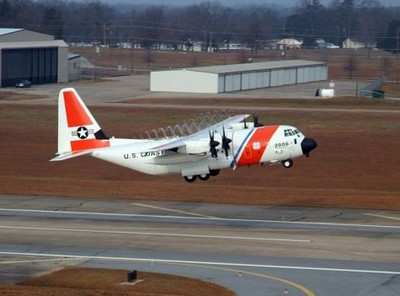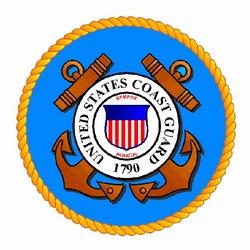What’s in a Letter?
Established in 1945 with a pair of PBY-5 Catalinas and one Grumman G-21 Goose, Hawaii’s U.S. Coast Guard Air Station Barbers Point conducts search and rescue, maritime domain awareness and surveillance, law enforcement, and cargo and transportation operations throughout Oceania—the geographical region encompassing Australasia, Melanesia, Micronesia, and Polynesia.

The facility is the only USCG air station in the service’s 14th District—the next closest aviation unit being in California. From 1947 until 1972, USCG Air Station Barbers Point operated Naval Air Station Agana, an air detachment in Guam. The installation’s primary function was providing Long Range Navigation (LORAN) support for Western Pacific stations.
Today, the Barbers Point aircraft fleet comprises four MH-65 Dolphin helicopters and four Lockheed HC-130 Hercules transport/cargo aircraft. The latter were recently upgraded from the “H” model to the faster, heavier-lifting, longer-legged, altogether more modern and capable HC-130J Super Hercules.
The HC-130J, by dint of its more advanced engines and propellers, bests the speed and altitude limitations of legacy C-130 models by twenty-percent. The aircraft’s forty-percent range advantage over the “H” model enables it to operate nonstop between Hawaii and Guan—a feat beyond its predecessor’s purview. The added range and endurance are inestimably valuable to flight operations conducted in a region characterized by vast expanses of open ocean.
Another notable difference between the C-130H and HC-130J is the “J” model’s liquid oxygen system, which allows flight at higher altitudes, thereby providing better vantage points from which to conduct the search and rescue missions central to the Coast Guard’s charter. What’s more, the HC-130J sports a modernized glass cockpit, navigational capabilities commensurate with advanced GPS procedures, and the Minotaur Mission System Suite—an arrangement of sensors, radar, communications, computers, cyber capabilities, and Intelligence-Surveillance-Reconnaissance (ISR) equipment by which air-crews can gather and process surveillance information and subsequently transmit such, in-flight, to other platforms and units. The system was developed by the U.S. Navy and is used across multiple defense and Homeland Security Department platforms.

Minotaur’s creation was driven by Department of Defense (DOD) concerns over obsolescence: legacy processors, by degrees, proved incapable of running the contemporary software systems upon which optimal execution of modern military missions is predicated. Minotaur, conversely, affords significant increases in processing-speed and memory capacity. The system is open-architecture and government-owned. Ergo, the Coast Guard has more control over upgrades and the timetables on which they’re implemented.
In addition to heavy air transport and long-range maritime patrol, the U.S. Coast Guard’s HC-130J Super Hercules long-range surveillance aircraft serve as on-scene command and control platforms, or as surveillance platforms capable of detecting, identifying, and classifying objects, as well as sharing real-time data with operational forces.
In all the Coast Guard is slated to acquire a fleet of 22 new, fully missionized HC-130J aircraft to replace its legacy HC-130Hs.
 ANN's Daily Aero-Linx (06.29.25)
ANN's Daily Aero-Linx (06.29.25) ANN's Daily Aero-Term (06.29.25): Gross Navigation Error (GNE)
ANN's Daily Aero-Term (06.29.25): Gross Navigation Error (GNE) Classic Aero-TV: Anticipating Futurespace - Blue Origin Visits Airventure 2017
Classic Aero-TV: Anticipating Futurespace - Blue Origin Visits Airventure 2017 NTSB Final Report: Cirrus SR22
NTSB Final Report: Cirrus SR22 Airborne Affordable Flyers 06.26.25: PA18 Upgrades, Delta Force, Rhinebeck
Airborne Affordable Flyers 06.26.25: PA18 Upgrades, Delta Force, Rhinebeck




